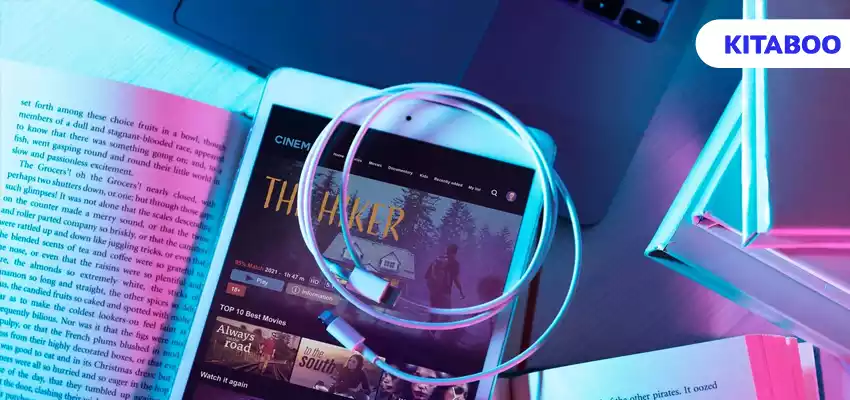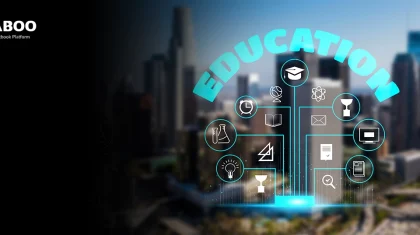
Unlocking Learning Potential: K12 Digital Textbook Platform
Summarize this blog with your favorite AI:
Online education is rapidly making its own niche in the mainstream educational system with all the convenience and interactivity it brings to the table. As a result, countless educational content platforms provide end-to-end digital course materials and management to ease the processes for educators and students alike.
In fact, for the forecast period of 2020–2027, the blended eLearning market is projected to grow at a CAGR of 13.3%, reaching a value of $34.9 billion. Such a striking popularity of eTextbook platforms is robustly backed by several advantages they bring towards enhancing students’ learning potential.
Online learning also provides several conveniences to educators that make the digital textbook platform for K-12 publishers a must-have for educational institutions today.
Read on as we explore how these platforms help explore students’ learning potential and improve the overall educational experience.
Read on!
Table of Contents:
I. What Does an eTextbook Platform Refer To?
II. How Does Digital Textbook Platform for K-12 Publishers Improve Learning Potential?
What Does an eTextbook Platform Refer To?
An eTextbook platform is a centralized interface that houses a plethora of digital course materials that students would need throughout their curriculum. These platforms have several key features that enhance the quality of learning for students:
- Capability to use the “Search” feature within online learning resources.
- Share and sync notes with peers in their classrooms.
- Add highlights, annotations, and bookmarks to digital textbooks to remember them later.
Several other features, like interactive modules and gamified learning, help enhance the takeaways for the students. The best part is that these platforms can be accessed from any compatible device, making online course materials more accessible.
How Does Digital Textbook Platform for K-12 Publishers Improve Learning Potential?
A digital textbook platform not only helps students make the most of their learning sessions online, but also helps teachers streamline the management of backstage processes such as distribution and collection of assessments.
Let’s take a look at how eTextbook platforms can help students unlock their learning potential:
Pacing The Courses
Not all students are alike and able to learn at the same pace as others. Online learning resources come with high customizability and empower students to approach each lesson at their own pace.
Students can review a concept multiple times using different approaches (video, text, infographics, etc.) to better understand it before proceeding to the next lesson. It helps drastically improve the learning outcome for the students.
Leveled Learning Ground
With the rapid and widespread proliferation of digital textbook platforms for K–12 publishers, it has become possible to reach a wide base of students at any given time. The traditional education system seldom allows equal educational opportunities for all kinds of learners, especially those from underserved parts of society.
With online education and open-source digital course materials, learners from all walks of life can participate in learning and realize the benefits it has to offer for their future. All a learner needs is a mobile phone, which is already a main part of the daily lives of people today.
Learning Independence
Educational content platforms have enabled a certain degree of freedom and independence for students when it comes to learning. While physical classrooms are still necessary to some extent, a large part of the curriculum can now be hosted online, over which students have complete control.
Students have the power to control the flow and direction of their curriculum in a way that suits their learning needs. For example, while student A finds that reading straight for 1 hour helps them remember better, student B has the freedom to break up the same lesson into four sessions of 20 minutes each to suit his learning style.
Personalization
When it comes to online learning, one size does not fit all.
Digital textbook platforms like KITABOO are equipped with AI-powered adaptive learning and personalization capabilities. These features allow students to personalize their learning journeys with their own preferences, such as font size, text-to-speech, assistive learning, quizzes, infographics, etc.
Additionally, students who go the extra mile to consume online learning materials get features like font size adjustments, paper contrast levels, text sharpness, and screen brightness adjustments.
Other personalization capabilities include adaptive quizzes and flashcards to learn better.
Schedule Flexibility
Online learning platforms can be extremely versatile and serve education to students whenever and wherever they are ready to consume it. The mode of learning does not necessarily need to be inside a physical classroom.
As long as a student carries a compatible device that is connected to the internet, they can access online learning resources easily, whether they are traveling on a bus, sitting at home, or learning while traveling elsewhere.
The flexibility in scheduling their lessons empowers students to break free of classroom barriers and access knowledge wherever they are.
Innovative Content
One of the biggest advantages of leveraging a digital textbook platform for K–12 publishers is their capability to provide innovative content to students. This includes interactive content, AR/VR-powered learning modules, gamified quizzes and tests, personal progress bars and rewards, and so much more.
Content with which students can interact using gestures, clicks, voice commands, or taps helps keep them engaged in learning. It has significant potential to enhance learning outcomes by boosting engagement and participation among students.
Accessible Learning
Online learning is highly inclusive and considerate of students with special needs. For example, students who are colorblind can access features to switch the colors of the interface so that they can understand the content displayed better.
Those who have visual impairments can access text-to-speech and features like screen readers to help them learn side-by-side with their peers.
Towards the Future with Digital Course Materials
Educational content platforms have helped bring education within reach of all types and classes of learners.
The transformative capacities of online learning resources stretch far beyond enabling everyone to learn freely; they make education more consumable for those with special needs and access restrictions to traditional learning.
Digital publishing platforms such as KITABOO allow K12 publishers to enhance students’ learning potential by facilitating several advanced features. These include interactive learning, lesson personalization, sharing notes and digital course materials, online and live classrooms, and much more.
To explore the full range of KITABOO’s features, visit the website today.
Also check:
Discover how a mobile-first training platform can help your organization.
KITABOO is a cloud-based platform to create, deliver & track mobile-first interactive training content.


